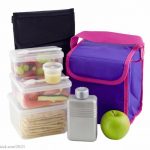Get great and easy back to school meal prep ideas and tips to keep your family safe from Foodsafety.gov, including how to pack safe lunches. It's not difficult; you just need to pay attention to certain steps. First of all, make a shopping list before you go to the store. Know which foods and recipes you'll be making for the week, then look in your pantry, fridge, and freezer to find out what ingredients you already have and what you'll need. When you are shopping, pick up perishable and frozen foods last so they stay cold longer. Separate raw meat and poultry products from veggies and fruit, putting them in bags to catch any raw juices. And make sure all of your food is in the fridge or freezer within two hours of checking out. When you start to prepare food, the first thing … [Read more...]
Possible Hepatitis A Exposure at Hana Koa Brewing in Honolulu
There has been a possible hepatitis A exposure at Hana Koa Brewing Company in Honolulu, Hawaii, according to the Hawaii Department of Health. That establishment is located at 962 Kawaiaha‘o Street in Honolulu. Anyone who consumed any food or drink products from that restaurant from August 3 through August 16, 2024 may have been exposed to the virus. Unfortunately, that is longer than the two week window in which hepatitis A vaccines are most effective. If you did eat or drink there during that time frame, contact your doctor to decide the best course of action for you. Hana Koa Brewing Company had no food safety violations that caused this case. The likelihood that patrons will contract this illness is very low, but the public still must be informed. The restaurant and … [Read more...]
FDA Finds More Ground Cinnamon Contaminated With Lead
The FDA has found more ground cinnamon contaminated with lead and is continuing to review sample results received from state partners. And that agency has collected the recalled ground cinnamon products in one place; bookmark this page and refer back to it whenever you need to buy cinnamon. State partners have been continuously sampling ground cinnamon from retail establishments for elevated lead levels. You can see the list of recalled products at the FDA web site. Please look at that list carefully. If you did buy any of those brands of cinnamon, do not eat them and do not use them in cooking. These products have a long shelf life, so check your home even if you have not purchased cinnamon lately. If you think that anyone your family has been exposed to lead through these … [Read more...]
Back to School Lunchbox Safety Tips From the USDA
Get back to school lunchbox safety tips from the USDA to keep your kids safe and healthy all year. The most important thing to remember is to keep hot foods hot and cold foods cold. You can accomplish this by using insulated soft-sided lunch bags, two cold sources, and insulated containers for hot foods. It is not safe to pack lunches in a paper bag. Remember the the danger zone is between 40°F and 140°F. Food should be colder or hotter than that range. In the danger zone, bacteria can double in food in 20 minutes. And pack a disposable wipe, or remind your child to wash their hands before eating. For cold lunches, use a soft sided lunch bag and include at least two cold sources. You can use two frozen gel backs that are at least 5 inches by 3 inches, or combine a frozen gel pack … [Read more...]
Stay Food Safe While Shopping at the Farmers Market
Learn how to stay food safe while shopping Farmers Markets with tips from the USDA. These markets are available seasonally and year round across the country. You can buy fruits, vegetables, meats, cheeses, and beverages, as well as prepared foods in some states. The first tip is to watch the temperature. Perishable foods should be out of refrigeration no longer than two hours, and that time shrinks to one hour if the ambient air temperature is 90*F or higher. Bacteria can double in a food in 20 minutes when the food is not refrigerated. Look for vendors who display perishable items like soft cheeses and raw meats on ice, in a cooler, or with refrigeration. And if you intend to buy these foods, bring an insulated bag or cooler with cold sources such as gel packs, ice, or frozen … [Read more...]
FDA Issues Warning Letter to Austrofood About Lead in Cinnamon
The FDA has issued a warning letter to Austrofood about lead and chromium in the cinnamon used to make apple cinnamon fruit puree pouches that were recalled in 2023. The North Carolina Department of Health and Human Services, the North Carolina Department of Agriculture & Consumer Services, the Maryland Department of Health, and the Pennsylvania Department of Agriculture conducted lab analysis of multiple lots of those pouches and found extremely high levels of lead. In addition, after an inspection in the company's facility in Ecuador, FDA investigators found serious violations of the Current Good Manufacturing Practices, Hazard Analysis, and Risk Based Preventive Controls for Human Food regulation. A hazard analysis was not conducted before the recall. Considering that food … [Read more...]
Hepatitis A Exposure at Azay Restaurant in Little Tokyo, LA in CA
A hepatitis A exposure at Azay restaurant in Little Tokyo, Los Angeles in California may have exposed patrons to the virus, according to the Los Angeles County of Public Health. That restaurant is located at 226 East First Street in Los Angeles. No additional cases have been identified at this time. The person worked while contagious between July 26 and July 30, 2024. Anyone who ate there July 29 and July 30, 2024 should get a hepatitis A vaccine, which is most effective when given within two weeks of exposure. Contact your doctor with any questions. Local pharmacies usually offer this vaccine. Hepatitis A is a highly contagious liver disease that is caused by a virus. It can cause a mild illness, or a severe illness depending on the health of the patient. It is spread through … [Read more...]
Hepatitis A Exposure at Queen Subs in Cortland, New York
A hepatitis A exposure at Queen Subs at 43 Port Watson Street in Cortland, New York may have affected patrons. A worker was diagnosed with hepatitis A, according to the Cortland County Health Department. The risk of contracting the virus is low, but the Health Department is offering hepatitis A vaccinations to those who may have been exposed. The vaccine is effective if given within two weeks of exposure. If you purchased food or drink at Queen Subs after July 4, 2024 there is no currently identified risk. The days of possible exposure are June 28, 2024, July 2, 2024, and July 3, 2024. Tomorrow is the last day to get the vaccine for those who may have been exposed on July 2, 2024, and Wednesday is the last day for those who may have been exposed on July 3, 2024. For anyone who … [Read more...]
FDA Warns Parents About Benzocaine and Lidocaine
The FDA is warning parents about the dangers of benzocaine and lidocaine in products used for treating teething pain in children. These topical medications offer little to no benefit and are associated with serious risks. The products include creams, gels, and homeopathic teething tablets. Benzocaine is a local anesthetic that temporarily numbs. It is the active ingredient in several nonprescription oral health care products, including Anbesol, Cepacol, Chloraseptic, HurriCaine, Orabase, Orajel, and Topex. These products should not be used for teething pain in children because they can be dangerous. Using benzocaine products can lead to a serious, and sometimes fatal, condition called methemoglobinemia, in which the oxygen-carrying capacity of red blood cells is greatly … [Read more...]











